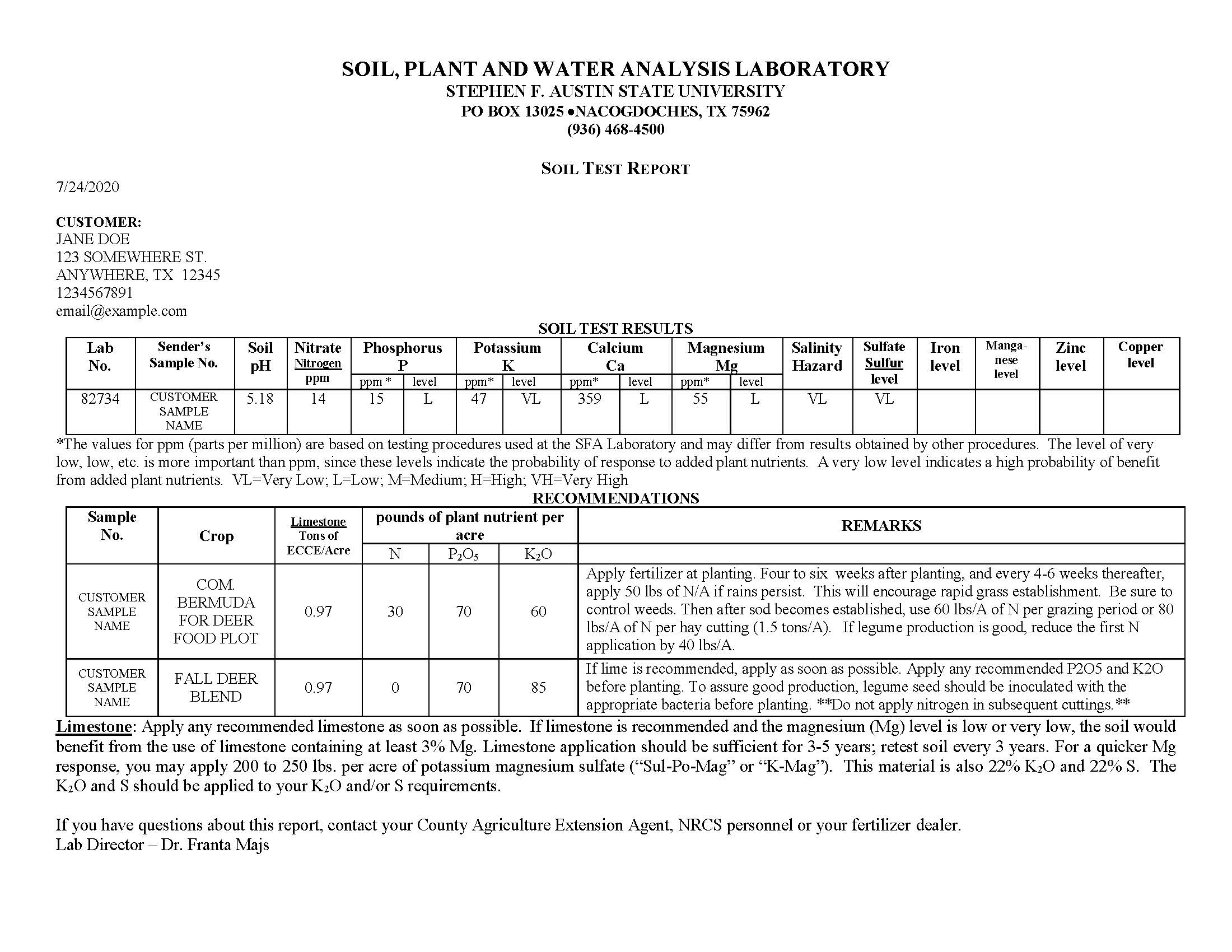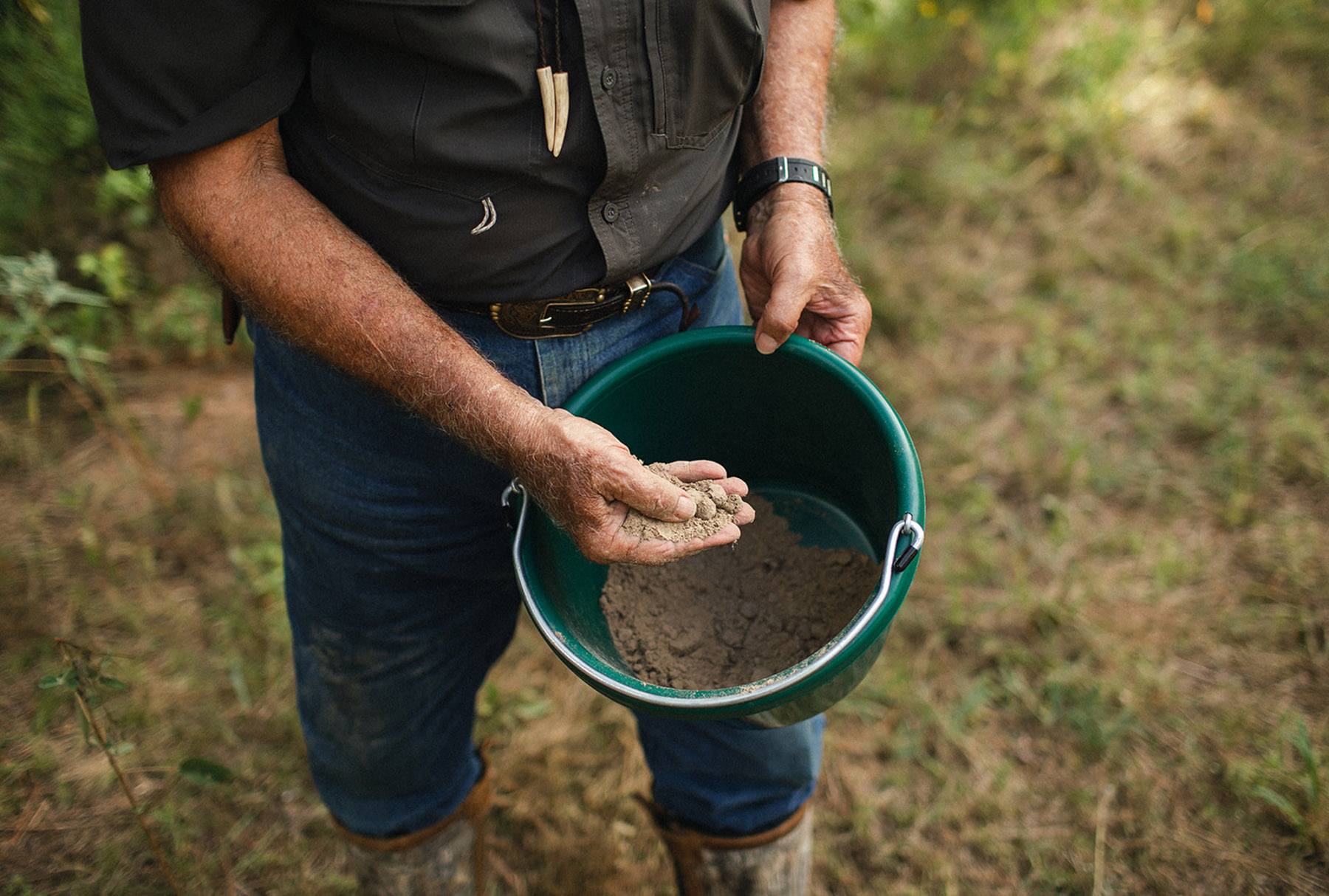Ever wonder why some properties produce more deer and better bucks, why others have mediocre results? The answer is right under your feet—it’s the soil! Yet, the one thing landowner give the least amount of thought is the types of soils on the property and how they affect the productivity of their land. Soils are intimately tied to the topography of the land, climate and parent material that produced them.
Successful gardeners and farmers learned this long ago—at least the successful ones. Growing a food plot or deer orchard is no different from a garden. It has been said that a good garden takes a lifetime, sometimes two, to develop. Here at the Institute we started with cutover land that erosion had robbed of its fertility. You do not often purchase a property that has perfect, fertile soils; unless you really do your homework in finding land; something few prospective landowners do!
We set out to restore productivity to our land, and knew it would take time. But, what determines the fertility of land? That is what this piece is all about. To begin, soil is made up basically of three components, based on particle size and nature: sand, silt and clay. These are in order of the size of the particles. Sand is produced by mechanical or chemical breakdown of rock into smaller and smaller particles. Silt is produced by even smaller particles, carried usually by water and deposited when water flow settles. Much of South Texas, for example is comprised on silt deposited in a shallow sea millions of years ago. Pick up some of this soil, rub it between your fingers and it feels like talc; smooth and sticks to your fingers. The fine nature of this soil makes it quite fertile and more able to hold water than sand, which lets water flow freely through it, and making it very droughty. Clay has the smallest particles, which often are charged and tend to hang onto water, only grudgingly letting the water go. Dense clays tend to hold water and create wet areas, with slow percolation into the underlying soil layers. A plant growing in dense clay can literally dry up, even though there still is water among the particles!

So, what makes the perfect soil? Ideally, a one-third mix of sand, silt and clay would be the perfect soil; provided there is one other component—organic matter. That is how we went about making the soils fo the Institute over a 30-year period into some of the most fertile soils in eastern Texas. In the beginning the high clay soils (subsoil actually) were quite acid, perhaps dropping to a pH of 3-4! We began by adding finely crushed limestone which is basic in nature. It takes up to 6 months for these additions to reduce acidity. The ideal pH of fertile soil is neutral, pH 7. To speed up the process and to add organic nutrients to our soils, we began a cover crop planting program, at the end of each season we mowed and plowed the dying plant material into the soil. This produced humic acide and greatly increased the water holding capacity. In about 7 years of these treatments, soils which had been unable to grow crops for deer, became highly productive and more drought resistant.
We also made regular applications of fertilizer, although as time goes on, we need less and less of fertilization. To properly fertilize, you HAVE to collect soil samples and have them analyzed for various parts of your property; especially the areas where you plan to plant food plots and deer orchards. To not take regular soil samples and have them analyzed, is foolish to say the least. You have no idea what is missing and what needs to be added. This also has an economic and ecological impact, since you may add too much or too little fertilizer. Here’s an example. We once worked with a landowner who refused to conduct soil analyses. He dutifully spread 400 lbs of 13-134-13 fertilizer per acre, year after year! He finally collected soil samples and had them analyzed out of frustration. After interpreting the soil analysis, he learned had an almost toxic level of phosphorus and only needed 50 lbs per acre of nitrogen! He had wasted a great deal of money, had poor performance of his food plots, and nearly ruined his soils in his attempt to fertilize his orchard!
If you are considering buying a property to manage wildlife, you need to start with looking at a soil survey of that area. These are readily available from the ASCS local office or there are online sources that permit you home in on the area you are considering. USDA has a web application that is easily used for this purpose. Go to https://websoilsurvey.sc.egov.usda.gov/App/HomePage.htm and follow their easy instructions. They will provide you with a custom soil survey of your property or the property you are considering buying. You will have to look up the characteristics of each named soil, using a further web search, but you can easily obtain the information you need. We live by a sound, time-tested saying: One test is worth a thousand opinions!


